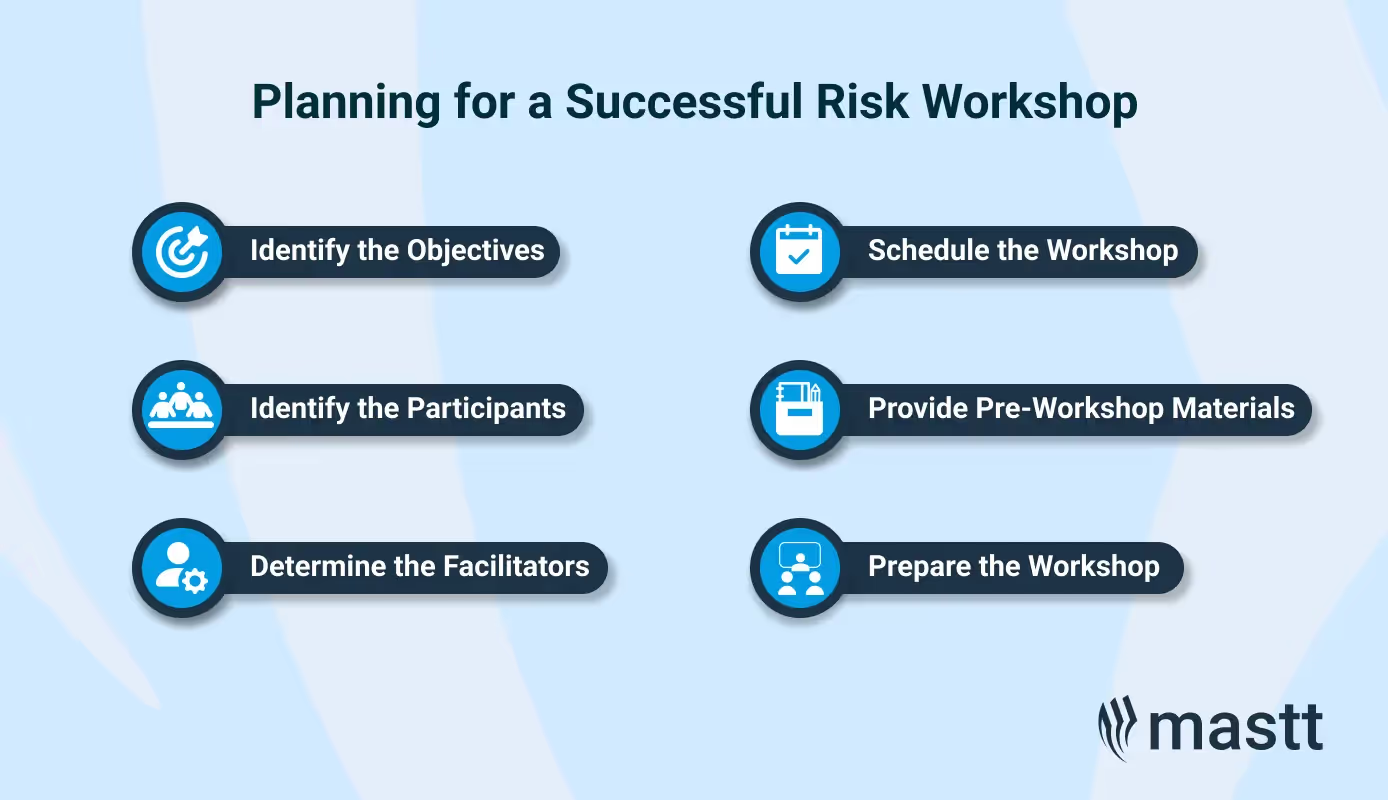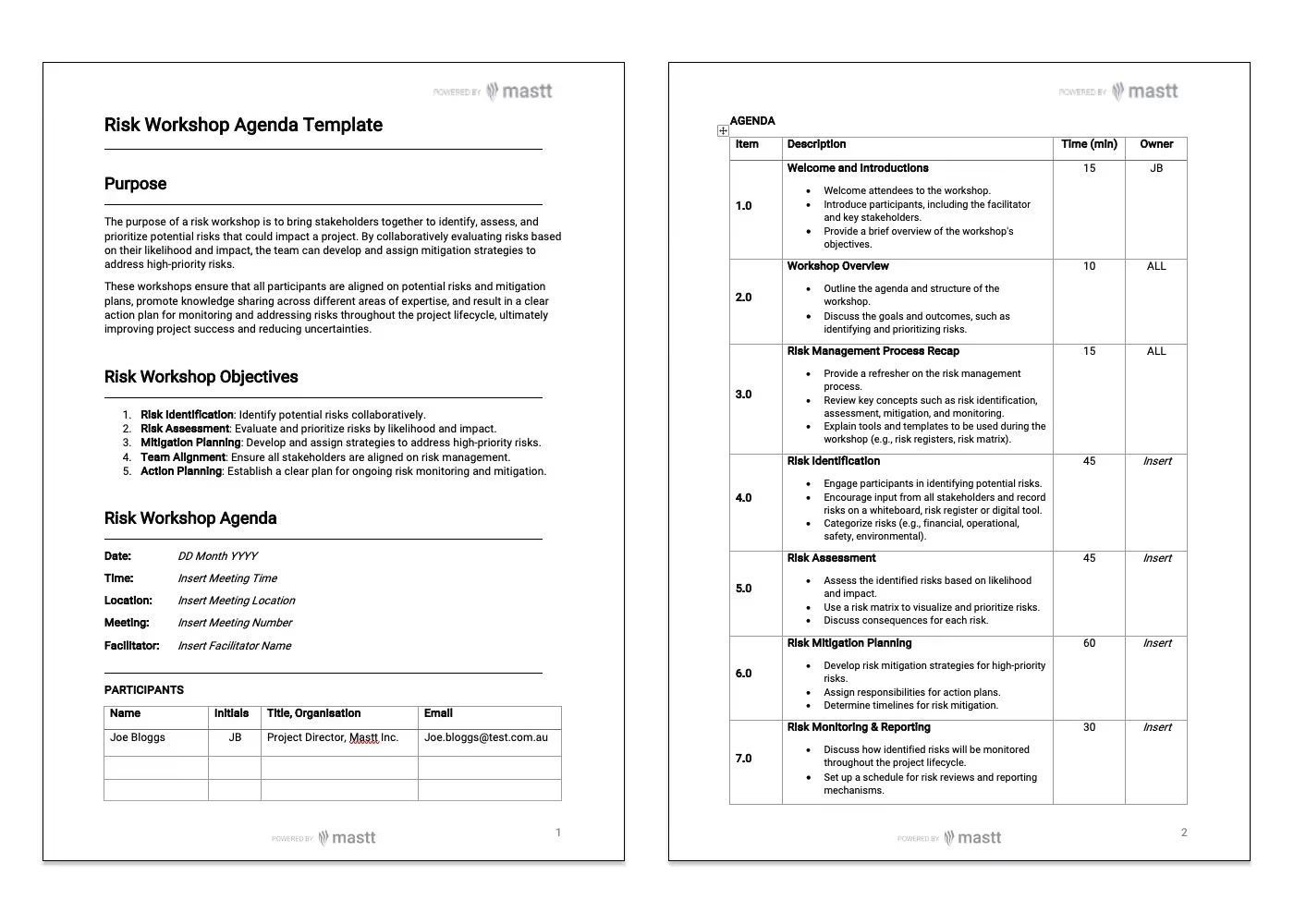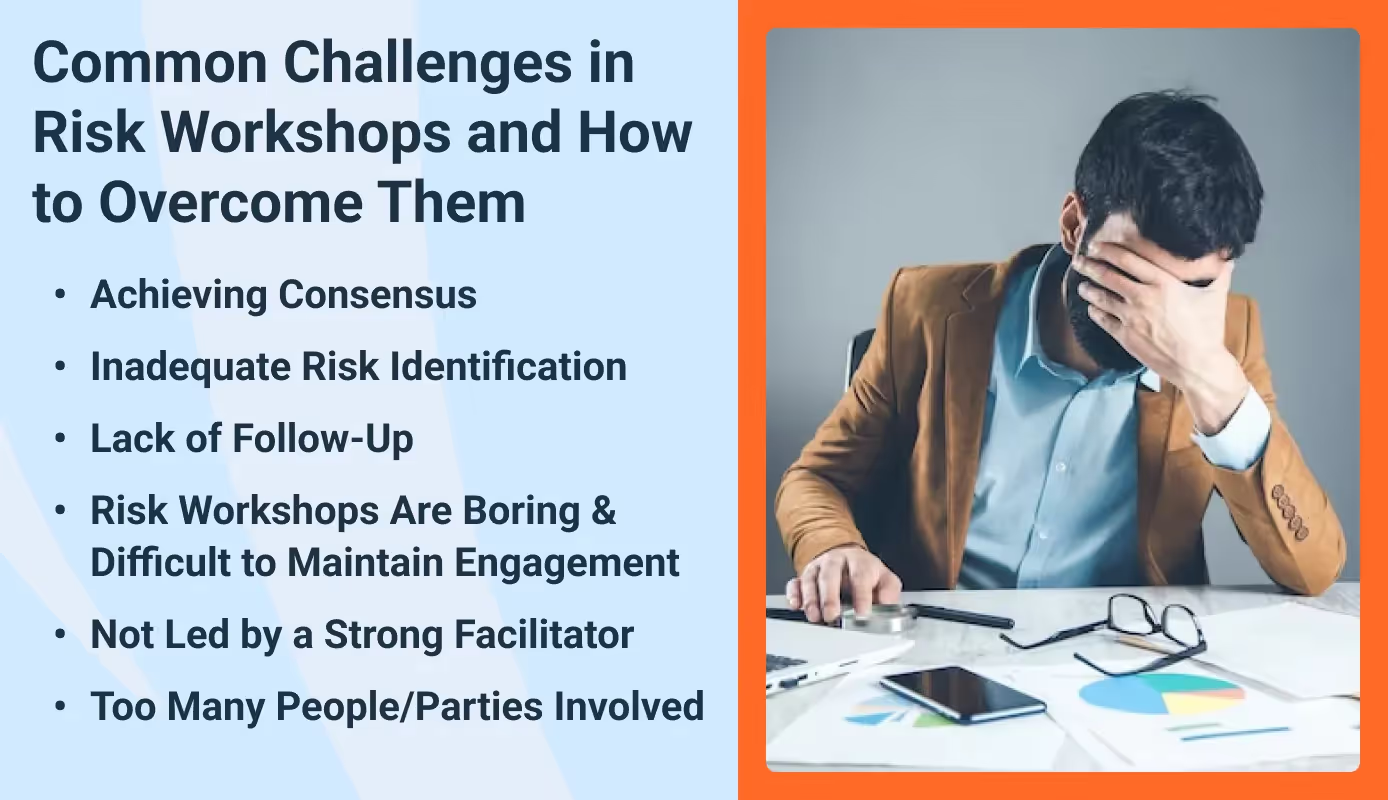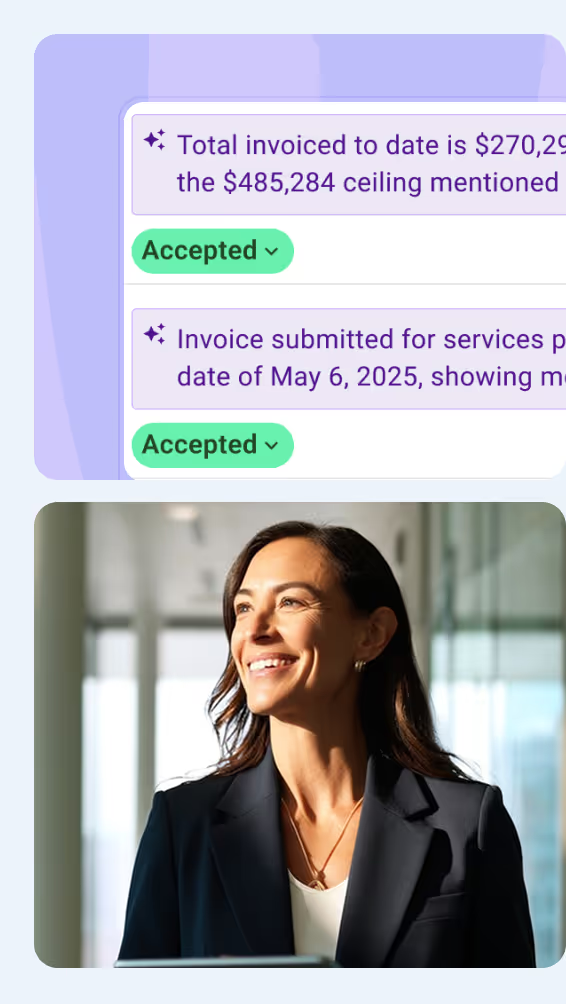When it comes to managing risks in your organization, a well-conducted risk workshop can make all the difference. But what exactly is a risk workshop, and how can you ensure that yours is effective and efficient?
This ultimate guide will help you navigate the ins and outs of risk workshops in 2025, complete with examples and a handy tips.
What is a Risk Workshop?
A risk workshop is a collaborative session where stakeholders, including team members, project managers, and sometimes external experts, gather to identify, analyze, and prioritize risks. These workshops aim to foster a collective understanding of risks and develop strategies to mitigate them.
Why are Risk Workshops Important?
Risk management workshops are critical for effective construction and capital project risk management. They offer several key benefits:
- Comprehensive Risk Identification & Prioritization: Risk workshops provide a structured approach to ensuring that all potential risks are thoroughly identified, prioritized, and addressed. This systematic process aids in developing a robust risk management plan that covers all potential issues, leaving no stone unturned.
- Proactive and Targeted Risk Management: Risk workshops empower teams to create targeted mitigation strategies by identifying and prioritizing risks early in the project lifecycle. This proactive approach minimizes surprises, enhances project predictability, and ensures risks are managed before they escalate.
- Enhanced Decision-Making: A risk workshop's structured framework supports informed and efficient decision-making. By assessing risks collectively, teams can allocate resources more effectively, ensuring that every decision is backed by comprehensive risk analysis.
- Stakeholder Engagement and Collaborative Communication: Risk management workshops significantly enhance stakeholder collaboration and communication. By fostering a shared understanding of potential risks, these workshops increase stakeholder buy-in and ensure that diverse perspectives are considered throughout the risk management process.
- Support for Compliance and Regulatory Requirements: These workshops play a crucial role in identifying and managing risks related to compliance and regulatory standards. By addressing these risks early, projects are more likely to adhere to necessary legal and industry guidelines, reducing the potential for costly compliance issues.
- Continuous Improvement and Process Efficiency: Insights gained from risk workshops contribute to the continuous improvement of risk management practices. These workshops' collaborative and structured nature allows teams to refine their approaches, apply lessons learned, and improve overall process efficiency for future projects.

How to Plan for a Successful Project Risk Workshop
Before diving into the actual workshop, careful planning is essential to ensure its success. Here’s how to set the stage for a productive risk workshop:
- Identify the Objectives: Start by clearly defining what you hope to achieve with the workshop. Whether it’s identifying potential risks, developing mitigation strategies, or fostering team alignment, having clear objectives will guide the entire process.
- Identify the Participants: Select participants who have valuable insights into the project. This should include key stakeholders, subject matter experts, and team members who can provide diverse perspectives on potential risks.
- Determine the Facilitators: Choose skilled facilitators who can guide the workshop effectively. Facilitators should be able to lead structured discussions, keep the session focused, and ensure that all voices are heard.
- Schedule the Workshop: Set a date and time that works for all participants. Ensure the schedule allows ample time for thorough discussion and analysis without rushing through critical steps.
- Provide Pre-Workshop Materials: Distribute relevant project documentation, data, and pre-reading materials to participants beforehand. This ensures that everyone arrives at the workshop prepared and informed, enabling more productive discussions.
- Prepare the Workshop: Finalize the agenda, prepare any necessary tools or templates (such as a Risk Matrix), and ensure the workshop space is conducive to open communication and collaboration. The better the preparation, the smoother the workshop will run.

What Materials are Needed for a Risk Workshop?
A risk workshop requires structured materials to guide discussion, capture risks, and ensure decisions are recorded. Having the right tools in place keeps the session organized, transparent, and actionable.
The table below lists the essential materials, their purpose, and examples:
These materials ensure every stage of the workshop (planning, identification, scoring, and reporting) is supported by reliable tools. In construction projects, digital platforms like Mastt reduce the admin burden by replacing spreadsheets with real-time dashboards, making it easier to keep all participants aligned on risks and actions.

How to Run a Risk Workshop: Step-by-Step Guide
With your risk workshop planned, it’s time to move into the execution phase. Here’s a step-by-step guide to conducting a successful risk workshop:
1. Preparation: Begin by reviewing the objectives and agenda with the participants. Set the tone for the workshop and ensure that everyone understands the goals and the process. A clear start sets the stage for productive discussions.
2. Identifying Risks: Encourage participants to engage in open discussions and brainstorming to uncover potential risks. Diverse perspectives are crucial here, as they help identify risks that might be overlooked.
3. Assessing Risks: Once risks are identified, use tools like the 5x5 Risk Matrix to evaluate their likelihood and potential impact. Group discussions and consensus-building techniques are essential here. Ensure that the assessment is accurate and agreed upon by all stakeholders.
4. Response Planning: Evaluate the effectiveness of existing controls for each identified risk. Determine whether the identified risk is within acceptable limits or if additional mitigation strategies are required. This step ensures that the team is aligned on how to proceed.
5. Documentation: Record the workshop's outcomes, including the identified risks, their analysis, and the planned responses. This information should be captured in the Risk Register, which is a critical reference throughout the project.
6. Workshop Close-Out/Follow-Up Actions: Conclude the workshop by reviewing the decisions and assigning responsibilities for follow-up actions. Ensure a clear plan for monitoring and updating the risk management strategies as the project progresses.
Construction Risks to Cover in a Workshop
A risk workshop in construction should cover the major categories of risks that can disrupt cost, schedule, safety, and compliance. Addressing these risks early ensures the project team can prioritize and control the most significant exposures.
The table below highlights the key types of construction risks, with examples and their importance:
Including these categories in a workshop helps project owners, managers, and consultants build a complete risk profile. By linking risks to cost, schedule, and compliance, the team gains a shared understanding of priorities and can assign owners for mitigation strategies that directly support project success.
Who Should Attend Risk Workshops?
A risk workshop should include decision-makers and experts who understand the project’s scope and challenges. The right mix of participants ensures risks are captured, analyzed, and managed effectively.
The following people should take part in a construction risk workshop:
- Project owner or client representative: Brings authority to approve actions and align risks with project goals.
- Project manager or program manager: Oversees delivery, schedules, and resources, ensuring risks tie to outcomes.
- Risk manager or facilitator: Guides the session, ensures structure, and maintains focus on risk assessment.
- Consultants or subject matter experts: Provide technical knowledge on design, safety, engineering, or compliance issues.
- Design and engineering leads: Identify risks in drawings, specifications, and construction methods early in the lifecycle.
- Contractors or delivery partners: Offer practical insights on site conditions, logistics, and supply chain risks.
- Finance or compliance officers: Assess cost exposures, insurance, and regulatory obligations linked to identified risks.
Having these roles in the room ensures every risk is reviewed from financial, technical, contractual, and operational perspectives. This balanced participation also builds ownership, making it easier to assign responsibilities and follow through on agreed mitigation strategies.
This collective effort leads to stronger construction risk management and better project outcomes, helping keep construction and capital projects on track.
Common Challenges in Risk Workshops and How to Overcome Them
Conducting a successful risk workshop comes with its set of challenges. Here are some common issues and strategies to overcome them:
- Achieving Consensus: Getting all stakeholders to agree on the assessment and prioritization of risks can be difficult. To overcome this, use consensus-building techniques and ensure that every participant's input is valued during discussions.
- Inadequate Risk Identification: Sometimes, risks are not fully identified due to a lack of preparation or insufficient data. Thorough preparation and encouraging open dialogue can help ensure that all potential risks are brought to light.
- Lack of Follow-Up: Identified risks need continuous management and monitoring throughout the project. Establishing a clear follow-up process and assigning specific responsibilities ensures that the risk management plan is implemented effectively.
- Risk Workshops Are Boring & Difficult to Maintain Engagement: Keeping participants engaged throughout the workshop can be a challenge. To combat this, incorporate interactive activities, use visual aids, and keep the sessions dynamic to maintain interest and energy.
- Not Led by a Strong Facilitator: A weak facilitator can derail the workshop, leading to unproductive sessions. Ensure that a skilled facilitator leads the workshop to guide discussions, keep the focus, and manage time effectively.
- Too Many People/Parties Involved: Having too many participants can lead to a lack of focus and prolonged discussions. Limit the workshop to essential stakeholders who have the most relevant insights, ensuring more streamlined and productive sessions.
By proactively addressing these challenges, you can ensure that your risk workshops are engaging and effective and lead to better risk management outcomes.

Risk Workshop Example Using Mastt
Running a risk workshop can be challenging, but Mastt’s Risk Module makes the process smoother, more efficient, and data-driven. Mastt enables seamless risk identification, real-time visualization, and automated integration of risks with project costs.
Here’s how Mastt can enhance your risk workshop:
- Streamlined Risk Identification: Mastt’s platform allows you to capture risks from various stakeholders and centralize them into one system. It facilitates structured discussions where risks are easily logged and categorized.
- Risk-to-Cost Integration: Mastt automatically integrates identified risks into cost forecasts. This feature allows for a more accurate financial picture, as every risk is associated with its potential cost impact. It ensures that the financial implications of risks are considered in the broader project budget.
- Real-Time Visualization: With Mastt, you can present risks and their impacts through interactive dashboards, making it easier to communicate risk levels, cost implications, and mitigation strategies to stakeholders. These visuals enhance decision-making and accountability during and after the workshop.
- Collaborative Features: Mastt enables project teams to collaborate seamlessly, tracking risks in real time. The platform allows stakeholders to monitor the status of risk mitigation strategies and provides reminders for follow-up actions.
Conclusion
In this guide, we've covered the importance of risk management workshops in capital project management, outlined the steps to conduct a successful workshop, and provided an example using Mastt’s Risk Module. Following these guidelines can enhance your risk management process and ensure that your projects are better equipped to handle potential challenges.






.avif)













